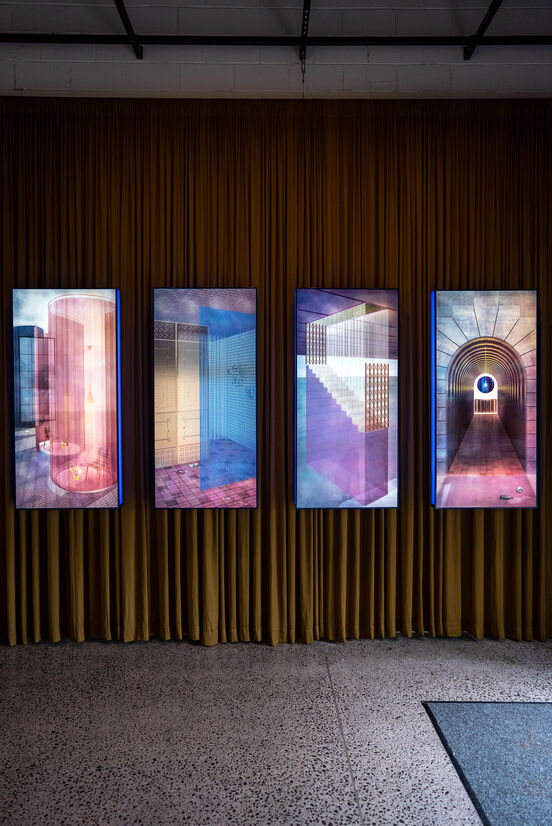-
Author
Natalie Bradburn -
Date
19 Feb 2022
Essay
Hostile Architecture
Raphaela Rose and the typology of the public toilet
It’s one of the most intimate, personal things we do, and we do it everyday: pee, poo, piss, wizz, tinkle, poop, plop, slash, shit, urinate, excrete, excuse or relieve ourselves. We perform these essential, mundane, and grossly private acts constantly, yet it is something we hardly ever talk about. Certainly not something we can bring up casually, even amongst our closest companions, there is still a certain amount of embarrassment and cringe around the conversation. Within the domestic environment these conditions can be controlled more easily, but the complexities of bringing these needs into the public realm have been and still are a very contested topic.
The typology of the public toilet as a space is very unique. It asks people to engage in one of the most private acts alongside strangers within an uncomfortable bodily proximity. It seems almost absurd, in fact so absurd, that throughout history it has been architecturally avoided, and still is today. Too hard to think about, too disgusting, it’s actually much easier to pretend that it doesn’t happen at all. But the implications of pretending it doesn’t happen excludes members of society and subsequently their ability to engage within the urban realm.
The historical locations of public toilets within Tāmaki Makaurau are physical manifestations of this anxiety as they were built so not only did we not have to look at them, we could keep pretending they are not even there. Whether they were on the outskirts of the CBD, such as the first ladies’ toilets on Karangahape Road, or underground like the Wellesley Street East facilities, these architectural offerings quietly announced who was able to participate. Excluded by gender, race, physical ability and class, public toilets, or the lack of them, set a tone. The hostility of these spaces, generated through poor access, locality and segregation, declared who the city values, with considerable prioritisation of the able-bodied pākehā man.
The subterranean toilet which appeared as one spatial solution to this impolite act, generated a subset of conditions of safety and sexual opportunity. Participants had to descend below ground, a space usually only allocated for unseen networks of pipes and infrastructure.
These spaces were visually separate from the street, but as with most public toilets they were relatively open once inside with only partial walls that allow for an acoustic connection. It’s a somewhat contradiction of privacy, taking something deemed to be absolutely solitary, putting that alongside others and being able to hear them doing the same. It inadvertently creates an environment with potential for transgression, and their reputation has the council wanting to wash their hands of them.
Several of the toilets have been decommissioned by the Auckland City Council, opting instead to refer those who require their services to look elsewhere. The removal and neglect of various facilities, as discussed through Raphaela’s work, interrogates how sanitation has shifted from a fundamental human right, to a consumer activity. Commercial businesses are expected to provide the infrastructure to support our bodily functions, but the cost involved to participate in these ventures continues to exclude members of society. This neoliberal shift has reinforced the lack of support and disinterest in supporting all bodies to engage within the urban realm.
There is no space quite like it, no complexity of needs so diverse, but surely that’s no excuse to hand it over, to neglect it’s need entirely. Raphaela’s work analyses these complexities with a focus on how the architectonics generate a hostility towards the bodies that can and cannot occupy it. By interrogating the atmospheres generated by the five public toilets, a more intimate understanding can be developed of the lived experience of those who engage with the built environment.
This essay was commissioned to accompany Toro Whakaara: Responses to our built environment presented by Architectus.
It was written by Natalie Bradburn of Clean Clean Clean, and edited by Tessa Forde.

Raphaela Rose, The light that glistens so darkly- four toilets that stand or once existed across Tāmaki Makaurau, 2021. Installation view in Toro Whakaara: Responses to our built environment presented by Architectus. Photograph by Seb Charles.